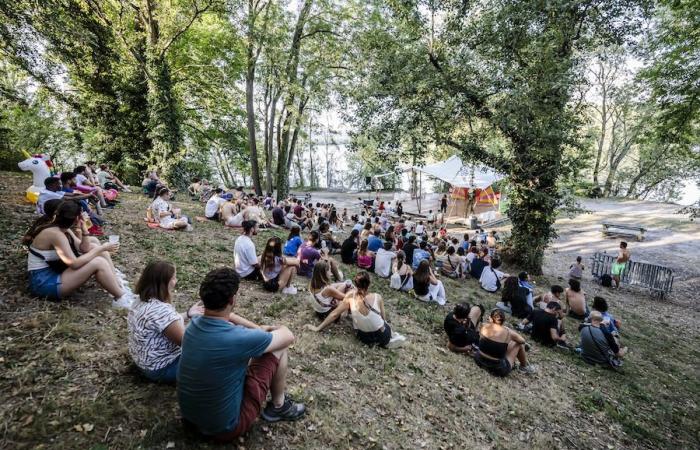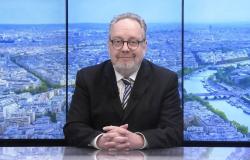The Woodstower Festival is celebrating its 25th anniversary this year. Born in 1998 in the enchanting woods of the Tour de Salvagny, this festival draws its essence from the same values of the emblematic symbol of the counterculture of the 60s, Woodstock. Committed and imbued with a spirit of community, the Woodstower makes us dream: music and culture meet in perfect harmony.
Every end of summer, the festival takes place among the bushes of the Grand Parc Miribel Jonage, just 20 minutes from Lyon, to celebrate freedom of expression, the inclusion of residents, and social diversity. It gives voice to artistic emergence while advocating ecological values and local development. For four days, festival-goers enjoy camping on site and let themselves be carried away by the magic of living together. By chatting with Maxime Noly, passionate director of the festival since 2011, we discover the secrets and behind the scenes of the organization of the Woodstower, especially to discuss its ecologically responsible and socially inclusive DNA.
How long have you been implementing ecological initiatives?
“Our commitments go back to the origin of the project. From the start, our goal was to minimize the impact on the environment as much as on humans. This approach is an essential component of our organization and guides our decisions. We work on several fronts: waste sorting, regional biodiversity, reduction of carbon emissions, transport, food, water consumption, while optimizing the impact on local residents. We also see ourselves as a social integration project. Our partnerships with socio-cultural structures in the Rhône-Alpes region represent 80% of our collaborations. »
It’s inspiring to see a festival that is ecologically committed. Scenography is a major source of carbon emissions in culture and it is a real subject of debate. How do you approach this challenge in your practices?
“We take charge of the scenography of the festival site by collaborating with a scenographer and volunteers to implement all of this, always using eco-sourced materials reused for each new edition. It requires work to reinvent the sets, but we often manage to create new installations from existing materials. This practice allows us to build links with local stakeholders, by collaborating with resource centers like Minka or by pooling resources with the Métropole de Lyon. For example, the tarpaulins used to cover the barriers were manufactured several years ago and are reused for each edition with a new design. »
What is your transport management plan?
“We are very proud of our partnership with the Métropole de Lyon, which plays on several fronts. Thanks to them, we can organize specific shuttles for festival-goers and extend metro timetables, thus facilitating access not only for residents of the metropolis, but also for those of the neighboring department of Ain.
It is also easier for us to predict the types of transport used, as 85% of our audience comes from the region, while the rest arrive by train from other parts of France. To do this, we are setting up a temporary Vélo’V terminal during the festival.
For artists, we have established an ethical charter, transmitted directly to the production teams who commit the team to the values and commitments of the festival. There are still a few points that are not addressed. For example, we do not force artists to limit the use of airplanes, because this represents a small part of our carbon footprint. We welcome very few international artists and even fewer international festival-goers. On a program mainly composed of electronic music, only 3 to 4 artists come by private jet. It is therefore about finding a balance, always putting our actions in context and prioritizing our ecological commitments in alignment with our operations. »
Have you been able to evaluate the carbon footprint over the years to measure the impact of these initiatives?
“Still in partnership with the Metropolis, a new tool was put in place this year for all structures in the region. We carry out annual monitoring and use a dashboard, in collaboration with our Sustainable Development Coordinator, to evaluate all aspects to be addressed in order to organize the most sustainable and least impactful festival possible. Monitoring indicators allow us to measure the progress of initiatives and identify concrete actions to implement to improve our practices and continue to reduce our carbon footprint. »
Your commitment to the region is widely recognized and contributes to your reputation as a dynamic festival with unique cultural and social initiatives. Could you tell us more?
“This commitment is truly rooted in our DNA and manifests itself in many ways. Economically, we work exclusively with local service providers. Artistically, 40% of our programming comes from the local music scene. We regularly collaborate with municipalities to offer renewed artistic initiatives, concerts, and open stages. This allows the public to continue to discover new artistic practices, while attracting more people to discover the festival. »
You also collaborate very closely with socio-cultural structures in the region, how does that work?
“We collaborate with MJCs, social centers, refugee reception centers, libraries, music schools, town halls, reintegration associations for people suffering from addiction, primary schools and colleges. Our goal is to share with the community while promoting inclusiveness and social diversity. We also aim to promote discovery and cultural accessibility, while maintaining a close relationship with the territory. »
What was the trigger for this approach?
We had to adapt our activity to support small formats in the territories and thus renew closer relationships with the inhabitants thanks to our cultural offerings. We have always sought to meet them, and it started with the Woodstour, where we offered initiations, concerts, and open stages. Over the years and thanks to partnerships, we have been able to develop new projects throughout the year, continuously promoting and supporting artistic emergence. »
Are you able to assess the human impact of these activities?
“We start by analyzing our own teams by annually evaluating the number of volunteers, their development, as well as their profile to identify possible synergies. We also examine each year the number of partnerships in order to measure the commitment of socio-cultural structures to our activities, and how many of them actually participate in the festival. This indirect data gives us significant insight into the evolution of our audience and the development of our event. »
What activities and trends do you observe in terms of participation by young audiences?
“From one year to the next, we have gradually increased our partnerships with structures to welcome groups during three different visits, with the aim of introducing young people to the organization of a festival through podcasts and workshops. Children aged 6 to 13 show strong interest and participation, which allows us to familiarize them with the world of culture while involving them in the festival as volunteers, employees or members of the public. »
It’s true that it’s always very attractive to know what’s going on behind the scenes at a festival. What can you say about the new features we saw this edition?
“From a programming and overall experience perspective, we introduced a new stage entirely dedicated to a retro aesthetic called the Boom. This stage offers hits from the 90s and 2000s, karaoke, American decoration, tattoo booths and immersive installations. In addition, we have planned a party in a container with small DJ sets and an immersive light experience. We also organized a bike ride leading to an intimate concert in a secluded corner of the park, for the more adventurous and curious! The edition was promising! »
Interview conducted by Farida Mostafa






